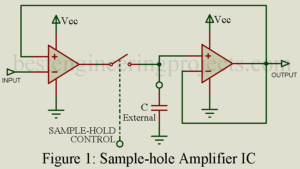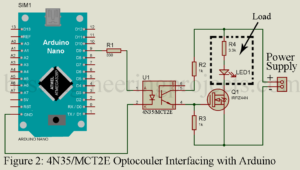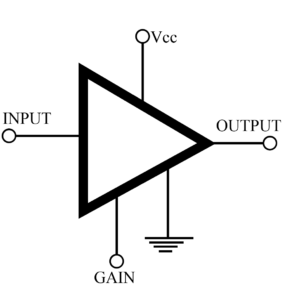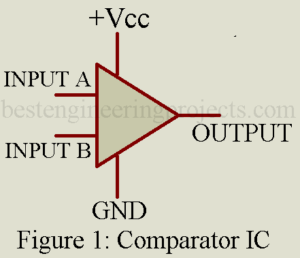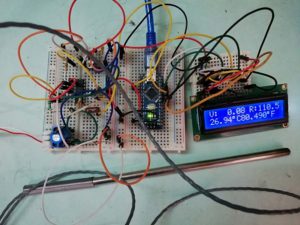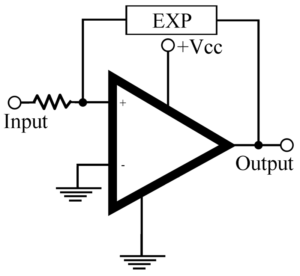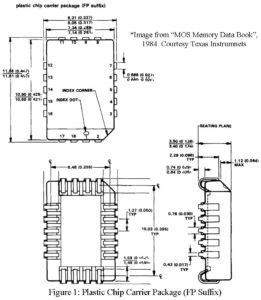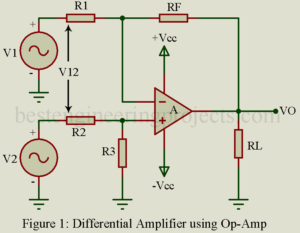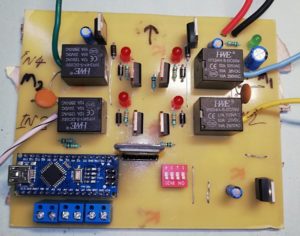In this article, we will discuss about Sample and Hold Amplifier IC, its key parameters and its applications. But before that, let us see what a sample and hold circuit is. The principle underlying the digital signal processing is that of sampling the analog signal. Sampling basically means obtaining the discrete time signals from the reduction of the continuous time signals. The Nyquist–Shannon sampling theorem is one of the well-known and commonly used sampling theorem in signal processing. A sample and hold circuit obtains samples of an analog signal and…
Read MoreInterfacing Optocoupler with Arduino
Today in this tutorial we will see the interfacing optocoupler with Arduino (4N35 or MCT2E). Optocoupler is also called an optoisolator. But before that let’s see what an optoisolator or optocoupler is? What is Optocoupler or Opto-Isolator: Optocouplers or optical isolators are designed to electrically isolate one circuit from another while allowing one circuit to control the other. The usual purpose of isolation is to protect from high-voltage transient, surge voltages, and low-level electrical noise that could result in an erroneous output or damage to the device. Such isolators allow…
Read MoreClass B, C and AB Amplifier IC
In this article we will see details like key parameters , applications and parts number of Class B, Class C and Class AB amplifier IC. Description of Class B Amplifier: In this type of amplifier, the quiescent (Q) point is set exactly at the cutoff of the IC curve, resulting in amplification of only one half-cycle of the input sinewave. Class B amplifiers are invariably connected back to back in push-pull circuits. In this arrangement one amplifier is operating during the positive cycle of the sinewave and is cut off…
Read MoreComparator IC | Parameters and Applications
In this article we all learn about comparator IC, it’s key parameter, applications and comments. So let’s first start with what is comparator IC or it’s description Description of Compartor IC Essentially a very fast-acting high-gain differential amplifier, a comparator senses the difference between two voltages and, by rapid amplification, provides maximum output immediately. De-signed for low-input current, most comparators are essentially voltage devices that interface with digital logic circuits. The various types of comparators differ primarily in the emphasis of some key parameters, such as low power consumption, fast…
Read MoreMeasuring Temperature using PT100 and Arduino
In this article, you will learn how to Measuring Temperature using PT100 and Arduino. PT100 is a platinum resistance thermometer, which changes its internal resistance according to temperature. In the name PT100, 100 represents ohm i.e. it offers 100-ohm at 00C. Similarly, PT1000 offers 1000-ohms at 00C. PT100 is widely used in industries because of its temperature range. From the nature of the resistance thermometer, we conclude that tolerance depends upon the range we are using it. When we used to measure temperature nearer to 00C (in both positive and…
Read MoreAnti-logarithmic Amplifier IC
In the Anti-logarithmic Amplifier IC the output voltage is proportional to the log or to the exponential function (antilog) of the input signal. Most logarithmic amplifier ICs are available with an external strapping option that makes them operable in either the algorithmic or the exponential (antilog) mode, as indicator in figure 1. The antilog element consists of semiconductors stage in which the input voltage procedures a current that is an exponential function. To produce a logarithmic output, the antilog element is connected as part of the feedback circuit as shown…
Read MoreIntroduction to Surface Mount Technology
The demand for high-density, cost-effective printed circuit boards has promoted the electronic industry to seek alternative methods to traditional plated-through-hole technology. One such alternative is surface mounting, a technology traditionally used in hybrid fabrication. The advantage of surface mounting is numerous but the button line is that it is cost effective and will begin to displace plated-through-hole technology as the availability of surface-mount components increases. Texas Instruments is fully supporting the growth of the surface-mount industry with its line of plastic leaded chip carriers. An introduction to the surface-mount components…
Read MoreClass A Amplifier IC | Application and Parameters
In Class A amplifier the input signal is reproduced, increased in amplitude, in exactly the same wave shapes at the output. To achieve this, the quiescent point (Q) is at the center of the collector current (IC) curve, so that the input signal as well as the amplitude output signal operates only over the linear portion of this curve. IC flows at all times. Class A amplifiers are used whenever the output wave shape must be the same, with a minimum of distortion, as the input signal. Operational amplifiers, and…
Read MoreDifferential Amplifier | Derivation | Key Parameters
Differential amplifier have two input terminals that are both isolated from ground by the same impedance. This amplifier is basically used in industrial and instrumentation purpose because this type of amplifier are better able to reject common-mode (noise) voltage then single-input circuits such as inverting and non-inverting amplifier. Basically, a Class A voltage amplifier, the differential amplifier amplifies only the difference in voltage between its two terminals. Signals that appears at both terminals are not amplified, allowing the differential amplifier to pick up weak signals in the presence of strong…
Read MoreBluetooth Controlled Robot using Arduino
This article shows you how to design a high-power motor driver for Bluetooth Controlled Robot using Arduino and relay. Previously, we had posted an Arduino-based Bluetooth-controlled car designed around L293D motor driver IC. There is some limitation of the L293D motor driver IC i.e. output current is limited to 600mA. What if you wish to drive a DC motor that consumes more than 1A? Let’s say 5A. For this, you need a more powerful circuit that delivers appropriate power to the motor. So, here you will learn how to make…
Read More